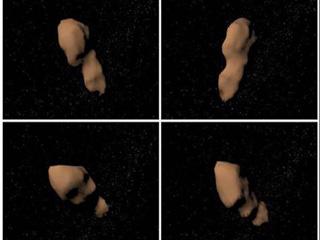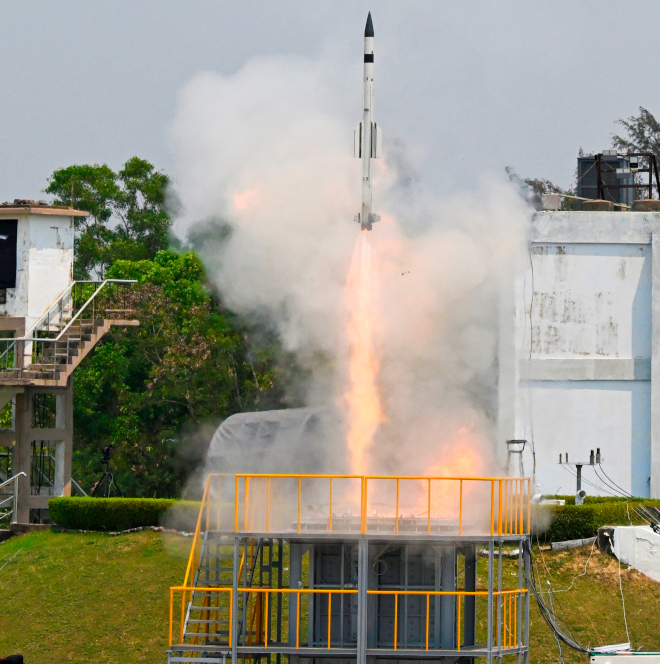
A computer-generated view of Asteroid 4179 Toutatis, using observations by a NASA observatory in California. Photo: NASA/Courtesy.
PARIS (AFP): China's first flyby of an asteroid shows that a gigantic space rock which once triggered a doomsday scare is essentially rubble, scientists reported on Thursday.
On December 13 2012, a lunar probe called Chang'e-2 rendezvoused with asteroid 4179 Toutatis as the rock, bigger than a city block, swept by Earth at a distance of around seven million kilometres.
Describing the encounter in detail in the journal Scientific Reports, Chinese scientists said the flyby was brief but highly successful, the result of seven months of preparation after Chang'e-2 had completed its primary mission of orbiting the Moon.
Advancing at more than 38,000 kilometres per hour, the probe came within 770 metres of the asteroid's surface, returning pictures with a resolution better than three metres per pixel.
The images show a rock shaped like a piece of ginger root, 4.75 kilometres long by 1.95 kms wide, with a crater at its big end showing an impact at some point in its history.
The astronomers also saw boulders and small gravel-like stones called regolith sliding over its surface, which suggest that Toutatis is not so much a single, solid rock but more an assembly of rubble.
"The rubble-pile structure is essentially a normal situation for most of the smaller asteroids" under a kilometre across, said Ji Jianghui of the Chinese Academy of Sciences in Beijing.
"This is also the case for Toutatis. In this structure, the asteroids are not a single rock but a loose collection of fragments under the influence of gravity, which means that it is an agglomeration of gravitationally-bound chunks," Ji said in an email exchange with AFP.
Toutatis was first spotted in 1934 and then lost from sight. It was then rediscovered in 1989 by a French astronomer, Christian Pollas, who named it after a Celtic god, Toutatis, which also features as a name of doom in the "Asterix" comic books.
Toutatis is one of the biggest "potentially hazardous asteroids," or PHAs, or rogue rocks whose orbit can bring them close to our planet.
As a result, it has been closely followed by telescopes and radar on Earth.
It came by Earth in 1992, 1996, 2000, 2004, 2008 and 2012, but will not approach so close until 2069.
 Previous Article
Previous Article Next Article
Next Article













The Indian Air Force, in its flight trials evaluation report submitted before the Defence Ministry l..
view articleAn insight into the Medium Multi-Role Combat Aircraft competition...
view articleSky enthusiasts can now spot the International Space Station (ISS) commanded by Indian-American astr..
view article